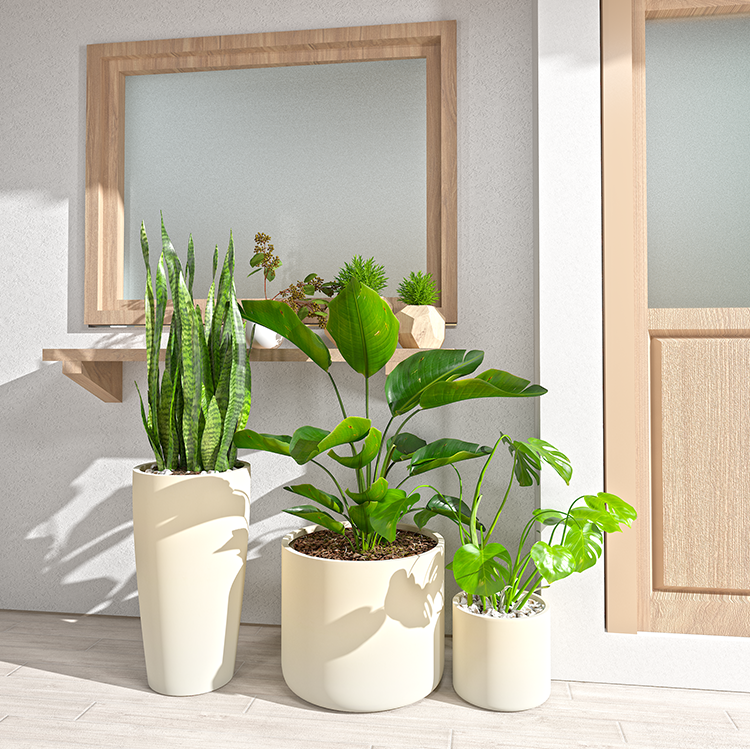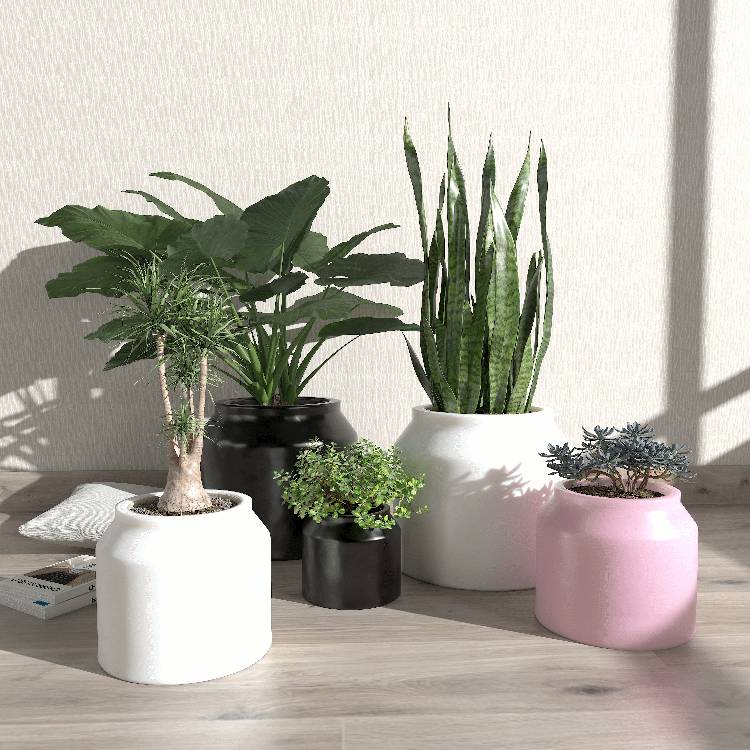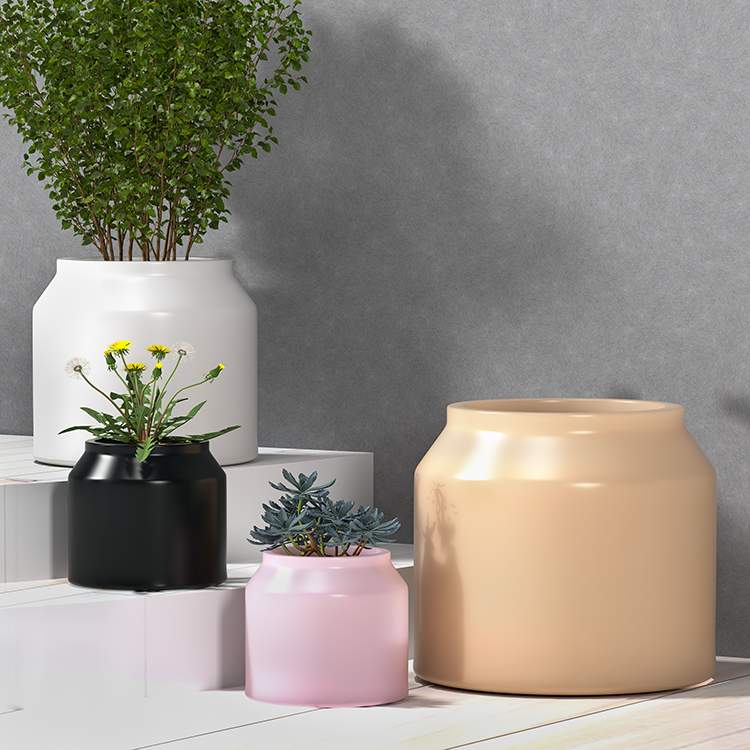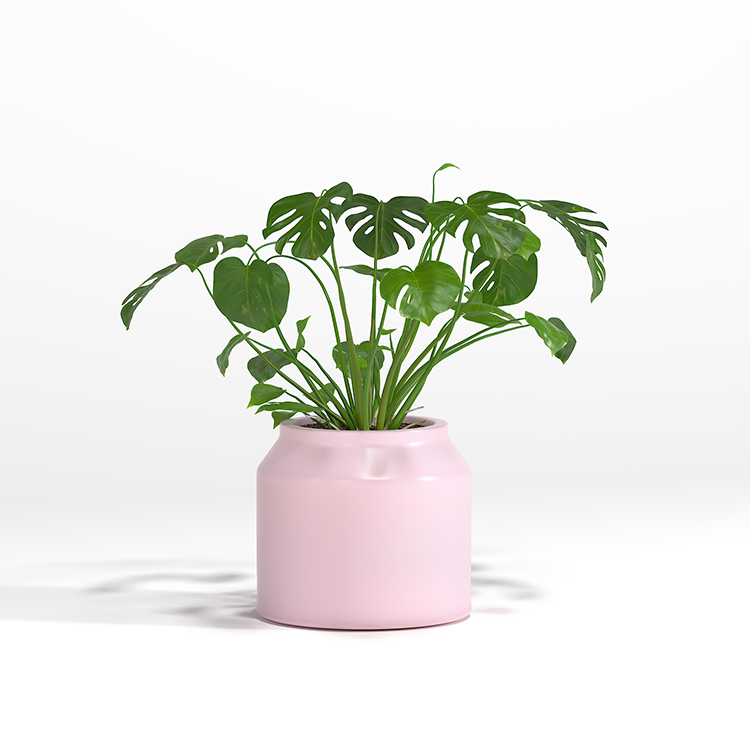Whether your planter is indoor or outdoor, color selection plays a huge part in how your plants thrive and the vibe they bring to the environment. In this paper, we will share our knowledge of color theory from a design perspective and how plants respond to pots with lighter and darker hues. We hope this gives you some food for thought when designing your space.
In addition to the health of the plants, buyers must consider how the color of the planters and pots brings emotion, distinction and harmony into a room. Different colors evoke different messages, depending on the location, such as a home, office, or outdoor setting.
Plant pots can blend into a room and garden, or become a stunning centerpiece, promoting a conversation topic and creating moods that embolden, intrigue or encourage harmony. So let’s talk about particular pot and planter colors and how they affect the plants and the rooms they occupy.
White
White containers are the go-to option for a minimalist feel that contrasts with the more dramatic design elements-predominantly black. Associated with sterility and cleanliness, white pots and planters promote a more modern look than other colors.
Obviously, white reflects light, so the soil inside stays damp and cooler for longer. Depending on the plant’s watering requirements, white containers can be an excellent option when placed in direct sunlight.
Black
Dramatic, sleek, striking. When paired with more neutral colors, black pots and planters immediately catch the eye. Depending on your preferences, it’s essential to know that too many dark elements can evoke feelings of depression and morbidity, so try not to go overboard! Black design elements can also make rooms feel smaller, so try using them in more expansive, open spaces such as lobbies, open-plan kitchen/dining areas, and meeting rooms.
When juxtaposed with white planters, blacks work better in an indoor setting away from direct sunlight because of their tendency to absorb heat and cause root damage from drier soil.
Gray
In the design community, grey is becoming more popular due to its use in ‘industrial themed’ environments. Neutral in nature, grey pots or planters can give off a similar vibe to beige, but without the warm feeling.
Depending on the hue, ash pots and planters retain heat differently. Where lighter grays reflect light better, darker versions suck up more heat. Testing different plants with different types of ash planters is recommended.
Red And Pink
Eccentricity at its finest. Red and pink pots and planters give the space an eclectic feel and give visitors an idea of your outgoing personality. Red has a romantic feel that works well in a restaurant setting, where lighting is dimmer.
While red warms the soil a little more than lighter colors, pink is pretty neutral and can be placed outdoors with less concern for the plant’s well-being in your indoor or garden setting.
Blue/Green
When interior and landscape designers use blue and green pots and planters, they intend to give residents a calming sense of sea and sky. When used indoors, these colors bring nature into your home or office. Greens specifically allow the flow of the plant towards its container, while blues offer a nice contrast often found in nature,
Emphasizing the soil issue, these colors are generally darker and absorb more sunlight, thus increasing the soil temperature, so their use outside must be judiciously implemented.
Brown/Beige
Brown and beige are more neutral, earthy tones that can be paired with almost any other interior or exterior design element. As they are the same colour as the soil and bark inside the pot, they become a significant extension of the plant itself.
Because they reflect enough sunlight, the soil does not become too warm, so the plants have good conditions to grow.
Post time: Jun-06-2023



